- Blue Mountains
- Central Coast
- Central West & Orange
- Lord Howe Island
- Hunter & Mid-Coast
- Lake Macquarie & Newcastle
- North Coast
- New England & North West
- Outback NSW
- Riverina Murray
- — Albury Wodonga
- Snowy Mountains
- South Coast
- Southern Highlands & Tablelands
- Daylesford & Macedon Ranges
- Geelong & The Bellarine
- Great Ocean Road
- Victoria’s High Country
- Mornington Peninsula
- Phillip Island
- Yarra Valley & Dandenong Ranges
- Outback Queensland
- Southern Queensland
- Sunshine Coast
- Townsville North Queensland
- Tropical North Queensland
- Whitsundays
- Coral Coast
- Margaret River & South West
- The Kimberley & North West
- Eyre Peninsula
- Fleurieu Peninsula
- Flinders Ranges & Outback
- Kangaroo Island
- Limestone Coast
- Yorke Peninsula
- Katherine & Surrounds
- Alice Springs & The Red Centre
- Arnhem Land
- Hobart & South
- Launceston & North
- North Island
- South Island
- Cook Islands
- New Caledonia
- Philippines
- Switzerland
- United States
- Aboriginal Culture
- Arts & Culture
- Beach Lifestyle
- Eat & Drink
- Nature & Parks
- Adventure & Sports
- Microadventures
- Multi-day Hikes
- Canyoning & Abseiling
- Climbing & Bouldering
- Dog Friendly
- Gravel & Bikepacking
- Kayaking & Paddling
- Mountain Biking
- Skiing & Snowboarding
- Skills & Safety
- Snorkelling
- Trail Running
- Wild Swimming
- Comparisons
- Gear Guides
- Photo Essays

A regular dose of adventure inspiration, trip ideas, latest events and giveaways.
This woman is walking the length of australia’s east coast – so we joined her for a day.
Eva Davis-Boermans
Eva is a creator and ocean lover from the south coast of NSW. Passionate about exploring, getting off the beaten track and looking after the planet so she can continue to adventure in it. She’s happiest when she’s out in the surf, behind the lens of a camera or behind the wheel of her beloved Troopy!
- Author Profile
Learn about We Are Explorers' Editorial Standards
Bailey Seamer is taking an entire year to hike the whole East Coast of Australia in order to raise awareness and money for mental health research. Eva tagged along for a day of walking to find out the story behind the Wandering Minds Walk.
The Wandering Minds Mission
I was told about the Wandering Minds Walk by my Mum who’d heard about it on the local radio. She excitedly told me that a young woman called Bailey was walking the entire East Coast of Australia to raise money for the Black Dog Institute, and she was about to wander through our little corner of the NSW South Coast!
My Mum loves nothing more than to lend a hand to adventurous souls, so naturally, she’d already reached out to Bailey on Instagram and offered her company on her walk, a place to stay, and as many cups of tea as she’d like.
They had a blast together and so being my mother’s daughter, I reached out and offered Bailey the same thing for when she reached my stretch of coast a little further north. She happily accepted and soon enough we were plodding our way along Wairo Beach, chatting about her journey, hiking , mental health, and everything in between.
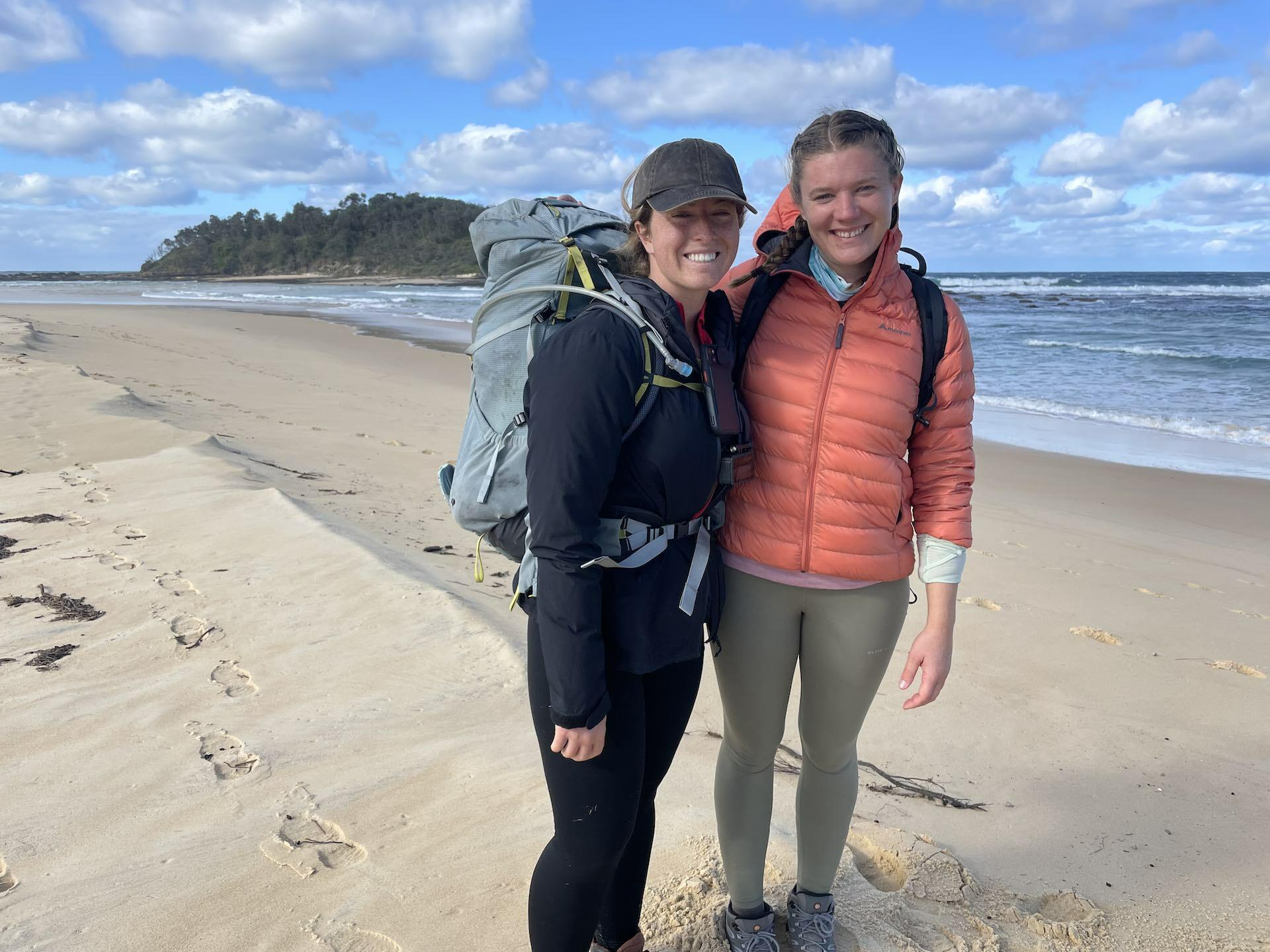
Bailey’s Own Battle With Mental Health
The reason behind Bailey’s walk for mental health is deeply personal. She was diagnosed with a major depressive disorder when she was 14 and then later diagnosed with bipolar at 19. She explained to me that it’s a really common misdiagnosis.
‘Nobody goes to the doctors when they feel great, so that’s why a lot of people with bipolar slip through the cracks. They go in [to the doctor] feeling depressed, come out of therapy six months later feeling better, and then it usually takes a really long time for psychiatrists and doctors to figure it out,’ she told me.
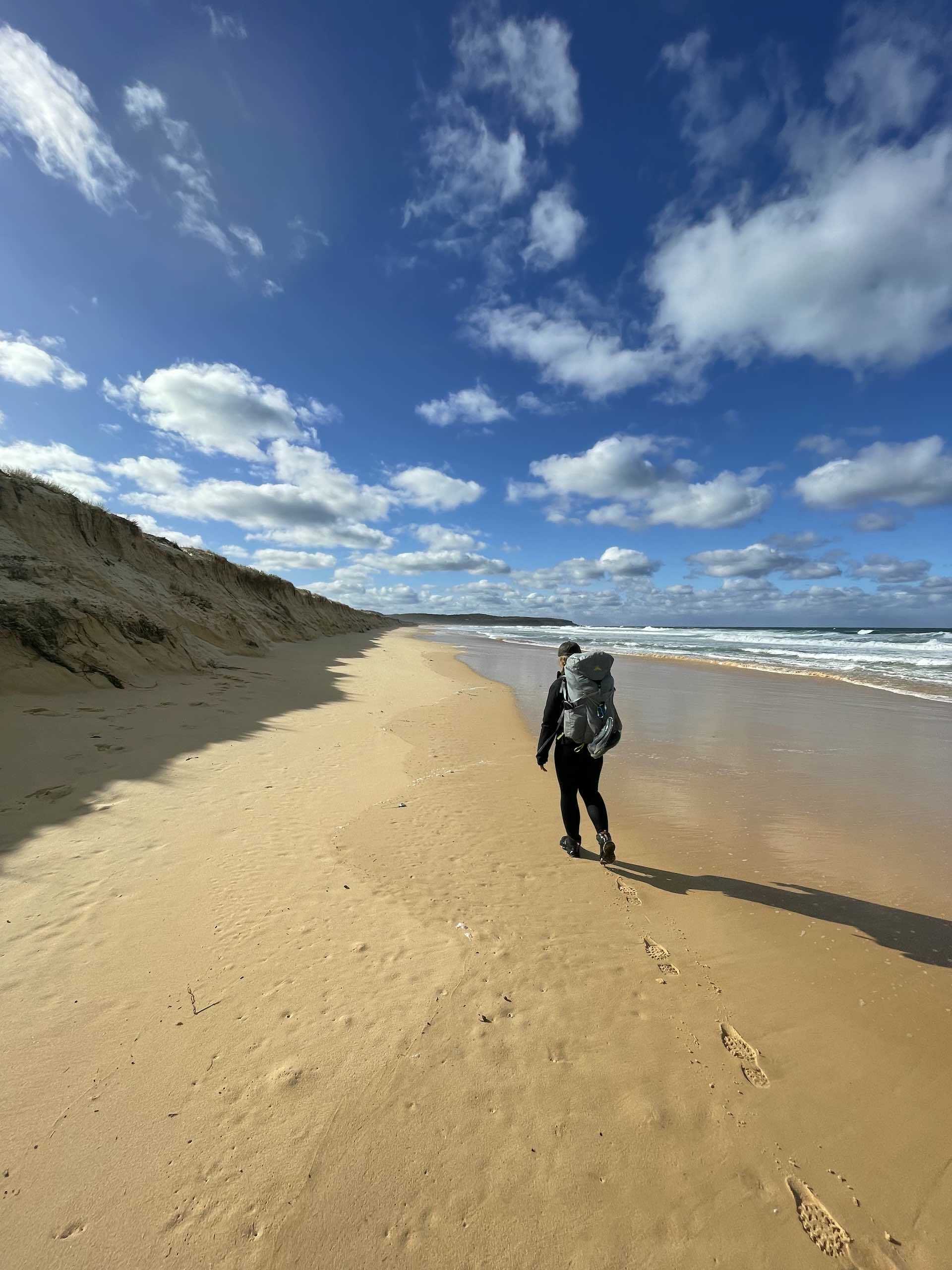
Being a young person with severe mental health made things like completing the HSC and attending university really difficult for Bailey. She describes her bipolar diagnosis as ‘really overwhelming’ because it made her feel like she couldn’t complete anything.
During one of her stays in hospital, after a particularly bad day, Bailey decided to pack a day bag and set herself on a mission to walk to her parent’s house which was 30km away. It was the first time she’d walked a distance like that.
‘It was probably one of the first times that I really felt like I accomplished something in a really long time and had a bit of self-pride’
For Bailey, it was a turning point, and from then on, hiking became a cathartic outlet.
Learning From Mistakes & Fruit Salad Support
In November 2020, Bailey took her love of hiking up a level and turned her dream of multi-day hiking into a reality. With the motto, ‘If I don’t do it now, I never will’, a few day’s notice, and almost no multi-day hiking experience, Bailey took the plunge. She bought all her hiking gear in one go and a one-way ticket to Coolangatta with the aim of walking 400km along the coast to Coffs Harbour.
Bailey reckons everything went wrong in the first week. She spent the first day walking along a five-lane highway, her feet fell apart because she had badly fitted boots and her pack was so heavy that she sent half her stuff home to Newcastle after the first week.
But despite everything, when she eventually made it to Coffs three and a half weeks later, she’d already decided that her next mission was to tackle the whole East Coast.
‘That trip was the best thing I could have done, even though it went so badly,’ she told me. ‘I made all my mistakes then so I didn’t have to make them now on this trip.’
Bailey is now well and truly in the swing of things, making her way along the East Coast of Aus, walking 8 – 10 hrs and completing between 15 – 45 kilometres per day, depending on the terrain.
‘I tend to just walk in the daylight hours so that I can then get to a destination, and figure out where I’m staying for the night within an hour of daylight to go,’ Bailey told me.
Although Bailey’s journey is a ‘one woman trek’ she’s very open to any assistance that people offer and explains that her support crew is a ‘fruit salad situation’.

Bailey with her Mum
Her family and friends often visit and walk along with her, plenty of friendly locals help her with accommodation and food as she passes through, and in some sections she has a support vehicle when it’s too dangerous or scantily resourced. One such place will be the Cape York Peninsula, where she plans to veer from the beach and walk along the Telegraph Track.
‘There’s something kind of poetic about being eaten by a shark, but fucked up about being taken by a croc,’ she laughs.
The Good, The Bad and the Hypothermic
But The Cape is a long way off yet. Right now, Bailey says that her mindset is just to think two days ahead at a time, to help stop her from getting too overwhelmed.
This technique has worked pretty well so far and her overall mental state is good, but she finds it’s highly dependent on what her circumstances are on the day.

‘On a bad day walking, if there’s been a bad bit of track or things go wrong, I feel like shit, but that makes sense. I’m finding once I’m in a situation that I feel comfortable and safe, those things and worries sort of tend to go away, which is nice to know that they’re just reflective of circumstance and not permanent,’ she said.
So far, Bailey has only had one really scary experience. After a particularly rough day of exhausting, overgrown track in the Nadgee Wilderness, she slipped and fell while filling up her water bladder, hitting her head and drenching all her gear in the process.
She managed to get out of her wet clothes and set up her tent, but despite her best efforts to warm up, her hands and feet were turning purple, she was nauseous and worried about concussion and hypothermia.
In the end, the rain, lack of fire and a looming night of Victorian mid-winter temperatures prompted her to use her Garmin to send for emergency help.
It took rangers and police 4.5 hours to get 10km down a dirt road to get her, chainsawing through fallen trees along the way. They managed to get her out to safety for a few days of warmth and recovery before driving her back in to pick up where she left off.

A black eye to prove it!
Feeling Beachy
Needless to say, she’s happy to be leaving winter and the cold weather behind her as she tracks north.
‘I’m really excited to get up into the warm months, not necessarily a location, but I’m really excited to be able to wear shorts and a t-shirt and hang out and go for swims,’ she said.
‘I spend so much of my time near the ocean and I don’t want to touch the water because it’s so cold.’
And while endlessly strolling the beach might seem like a dream to some, Bailey says there’s definitely pros and cons to sticking on the coast.

‘The best part about a beach is the fact that you cannot be lost. You’re on the East Coast, it’s right there. You can’t fuck it up. The downside is that every beach has a headland and whether it’s crossable or not, you don’t know until you’re at the other end of it,’ she told me.
‘When you walk on beaches all day, it doesn’t matter about what time you start or what time you finish, you’ll hit a low and a high tide. So that kind of takes out that element of any control, trying to plan around that.’
‘I call my family and friends around really annoying stretches of soft sand so that they can distract me.’
A Tricky Goal to Measure
Despite the ups and downs of day-to-day life, Bailey’s goal of raising money and awareness for mental health is a constant motivator.
‘I have an ambition of raising $100,000. It may not happen, but when you’re already doing what I’m doing, there’s no point being conservative now!’
She chose to fundraise for the Black Dog Institute because of the work they do in medicinal and intervention surgery, which Bailey has benefitted from in her own mental health treatment journey.
‘They’re really digging into the science behind the brain and how it works. It’s so hard with mental health because it’s not like if somebody breaks an arm, we’ll just go in and put a cast on it. They can’t see the brain so it’s hard to measure what works and what doesn’t,’ she said.
Her other goal, raising awareness, is a much harder one to measure but equally important.
Although she could probably do her walk in less than a year, Bailey wants to take the time to engage with the communities she passes through in a meaningful way and use her journey to help people understand that you can have bipolar and still live life and achieve really great things.
‘There are a lot of people of all ages that suffer from mental illnesses that really do struggle with direction and purpose. When I was younger, I really needed that and I couldn’t find it in many places,’ she told me.
‘And I thought, it’d be really cool if I could be that person for someone else who is struggling and at the same time just try to open up conversations and comfortability around it.’
Bailey hopes that being loud and proud, and talking openly about her condition, while she tackles such a mammoth task, will help people in a meaningful way.
Get Stuck In!
As you might have gathered, Bailey is the kind of person who’s open, willing to meet new people, and include anyone and everyone in her journey. After our walk along the beach, she stayed in our spare room and we chatted until all hours over some home-cooked pasta with the heater on full.
Whether it’s walking with her for an hour or taking on a whole section of the coast and camping , Bailey wants people to come along for the ride and to know that there’s nothing stopping them from pursuing their own adventures, whatever they may be.
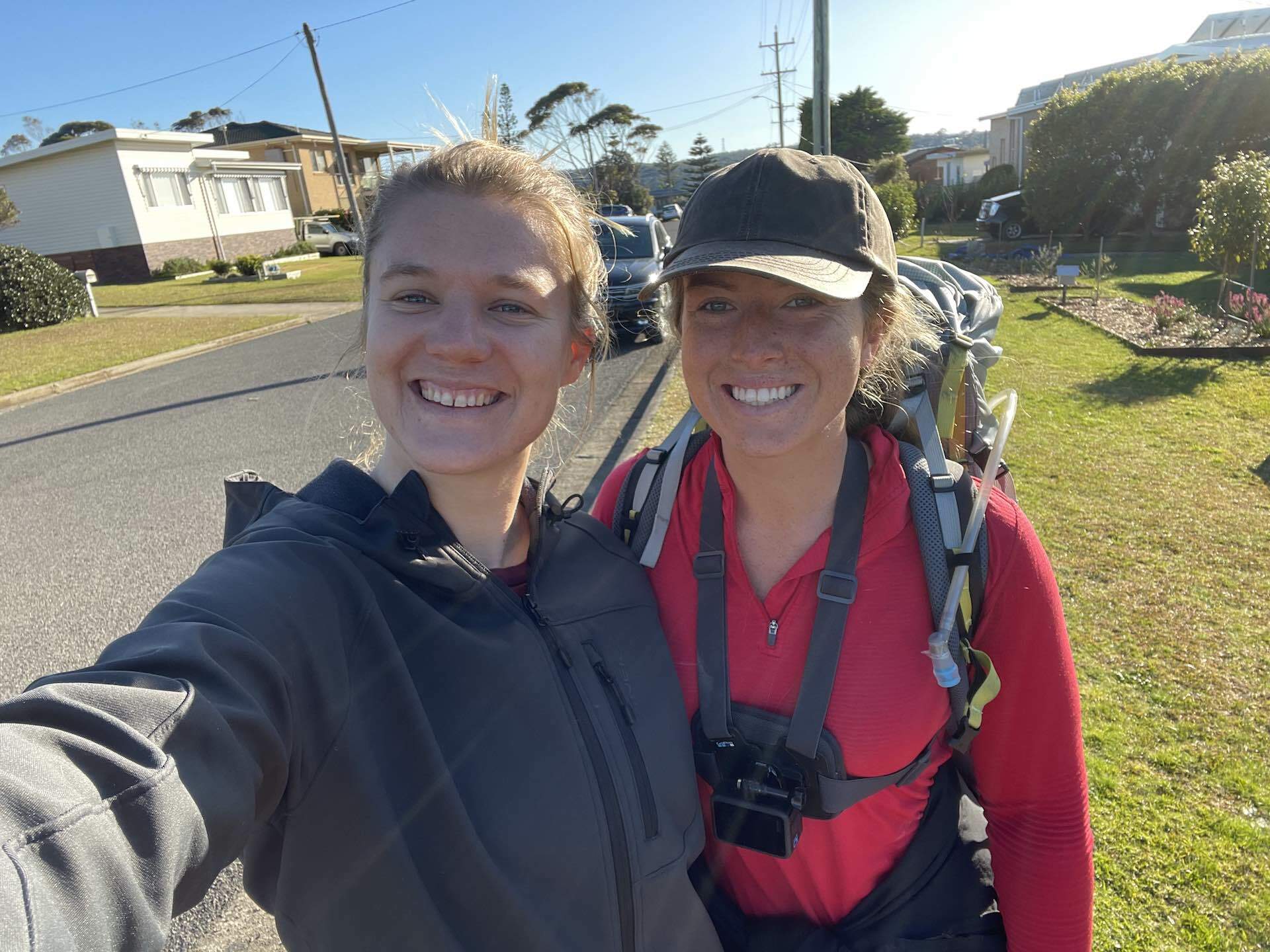
‘Aside from the mental health stuff, it’d be really cool for more people to recognize that you don’t actually need anything special to go out and do cool things or to follow any of your passions or anything like that. Like I’m by no means athletic. I’m just stubborn,’ she told me.
‘A lot of people have told me to my face, “That’s impossible. You can’t do that.” And to be actually out there doing it, I really hope that some people find a little bit of solace and a little bit of motivation to go out and do their own thing.’
If you can’t meet up with Bailey in the flesh, you can still follow her journey and support the cause through her website and Instagram !
MORE INSPIRATION

Bailey Seamer in final leg of 5,000km walk up Australia's east coast to raise bipolar disorder awareness
Bailey Seamer had conquered more than three-quarters of a gruelling 5,000-kilometre walk up the east coast of Australia, when she checked herself into a mental health hospital.
She had trekked for 10 months to reach North Queensland, pushing through being knocked unconscious in a remote creek and nearly getting hit by a car on the side of the Bruce Highway.
But as her mornings got tearier and familiar — but nonetheless terrifying — thoughts of wanting to die crept into her mind, she knew she needed to stop and get help.
"That was a really hard decision … I flew into Sydney and I actually went into a mental health hospital for a month," the 24-year-old said.
"I felt like I was failing because I had to go back … [but] I kind of developed this mindset: 'OK, I'm losing the battle to win the war'.
"I'm going to get treatment so I can finish what I started."
'There has to be more to life than this'
After years of dealing with crippling depressive episodes that could grind her down to a catatonic state, Ms Seamer was diagnosed with bipolar disorder when she was 19.
"It was quite crushing," she said.
"I felt a lot of doors and opportunities had been closed on me in regards to whether I would be able to own my own home, have a career, even tertiary level study felt impossible at the time."
During one of her first admissions to a mental health hospital she had an epiphany that would eventually take her from one end of the country to the other on foot.
"I sort of went, 'There has to be more to life than this, there has to be more to life than just doctor's appointments and hospitals and being unwell,'" she said.
"So I'm going to do something 'grandacious' (sic) to show myself and other people with mental illness that there is a life worth living and we are capable of achieving great things.
"I guess that's sort of where it all started — from the lowest part of my life. And instead of letting that destroy me and my future I used that hardship as fuel to get here."
The first of millions of steps
In May last year, Ms Seamer's father drove her 13 hours from her home in Newcastle to the southernmost point of the Australian mainland at Wilsons Promontory in Victoria.
Armed with a 20 kilogram backpack — nicknamed 'Monster' — and not much hiking experience, she set off with the goal of making it to the tip of Queensland's Cape York Peninsula.
She called the journey the Wandering Minds Walk to reflect the extreme fluctuations of life with bipolar.
Along the way she has raised more than $50,000 for the research organisation Black Dog Institute and addressed schools and community groups about mental health.
"It has been an absolute adventure. Lots of ups and downs, pun intended," she said.
"There have been a lot of times that I honestly thought, 'Oh my god, I can't do this'."
Hairy moments and 'crushing lows'
Barely a few weeks into her journey, she was rescued by emergency services after falling in a shallow creek and knocking herself unconscious in the remote far south coast of New South Wales.
Waking up wet and freezing with a black eye, she activated her emergency beacon.
"It took two police officers and a ranger about six hours to chainsaw in to where I was," she said.
"And then three days later I actually walked myself into that spot and walked myself back out — I couldn't miss an inch of the east coast."
About 2,000km later, while walking beside the Bruce Highway between Rockhampton and Mackay, a car nearly hit her before speeding off.
"They just came out of their way and ran over the spot I was walking — I had to jump into the bushes", she said.
"I'd love to say I took it like a champ but I was a mess, I was crying.
"I did put in a police report … but then the next day I started walking again because I feel like it's one of those times just getting back on the horse is probably the best way to go about things."
For all the physical challenges of the walk, her greatest struggles by far have been psychological.
While walking up to 40km some days has been therapeutic in many ways, it has not always kept at bay the "crushing lows" that have long punctuated her life and brought on suicidal ideation.
"I guess maybe I was a little potentially delusional that maybe this year, because I was doing something for charity, my bipolar might leave me alone," she said.
"You can be really deflated because sometimes you feel as though you are doing everything in your power to be well, and still getting sick is a really frustrating feeling."
Ms Seamer has made a point of speaking candidly about her struggles on social media to show people the realities of living with mental illness.
Alongside photos in stunning locations and effervescent pieces to camera are at times confronting videos of her in the grips of a depressive episode.
On two occasions she became so unwell she suspended her walk to seek psychiatric treatment, most recently in March when she flew out of Townsville to receive a course of transcranial magnetic stimulation (TMS) in hospital.
She returned a month later to pick up where she had left off.
"That I guess was the whole point — it was about demonstrating there is a life you can live alongside mental illness and it doesn't have to stop you from pursuing your dreams and passions," she said.
"Over time I have realised on this journey that getting help isn't quitting.
"If anything, it's being so determined that you won't quit."
Nearing the finish line
After more than a year on the road, Ms Seamer has made it past Cairns and is about to start the final leg of her trip — crossing the vast and remote Cape York Peninsula.
She has vowed to reach the top, even if she has to crawl to get there.
"You've just got to keep moving forward — one step at a time — and not be afraid to access support if you need it," she said.
Ms Seamer hopes her journey will remind those living with mental illness to be kind to themselves.
"It's okay to be sick sometimes, it's OK to feel this way, it doesn't make you any less of a person," she said.
"You are deserving of a happy and healthy life. Don't ever stop fighting for that. You deserve that. We all deserve that."
Mental health in your inbox
Get a selection of the best mental health content from across the ABC by subscribing to our monthly newsletter
- X (formerly Twitter)
Related Stories
'a theme park-type situation': national parks are getting a makeover, and many aren't happy.
- Exercise and Fitness
- Mental Health
- Christmas Connect Video Now Live!

Wandering Minds Walk.

A year’s journey Trekking over 5000km along the east coast of Australia.
I’m standing up to join Team Black Dog to turn groundbreaking research into life-saving action. Mental illness doesn’t discriminate. It affects people from all walks of life — individuals, families, workplaces and communities. Please support me as I spend 12 months hiking the east coast of Australia with the ambition of raising awareness, understanding and acceptance of mental health illnesses that affect 1 in 5 Australians every year.
Sponsorship will provide necessary funds for food, equipment acommodation and medical supplies for the duration of the walk. All sponsorship money that is not utilised for walking specicifc resources will be donated to the black dog fundraising page. The generosity of your sponsorship is a crucial component in keeping me alive, safe and able to continue my journey to help others.
To learn more about Bailey’s journey and to provide support check out the links below.
Hey Wandering Minds Walk, let's meet for a coffee?
Email Address
My Business Name
Where shall we meet? Where shall we meet? Mawson Boffee Seed Two Pines Cafe Caves Beach Grocer Caves Coastal
Charity, Awarness, Mental Health, Go Fund Me, Walk, Hike, Journey, Trek, Australia, Bailey Seamer, Advocacy, Black Dog, Depression, Sponsorship
cavesbeach connect.
All businesses represented on Caves Beach Connect are owned or operated by locals that live in and around Caves Beach although the businesses themselves may not necessarily operate in Caves Beach.
Our guiding principle for listing a business is for anyone that lives in or around Caves Beach and owns or operates a business inside or outside of Caves Beach.
We want it to be a vehicle to encourage networking and for locals to support locals.
The views and opinions expressed by each business or community stakeholder are those of each business or community stakeholder and do not necessarily reflect the views of Caves Beach Connect.
Caves Beach Connect acknowledges the Aboriginal people known today as the Awabakal, as the traditional Custodians of the land, respecting Aboriginal Elders past, present and future. Caves Beach Connect recognises the local Aboriginal community today in all of their diversity, who came forward to share their experiences, knowledge, images and memories.

Wandering Minds Walk
24-year-old Caves Beach local Bailey Seamer has been walking more than 5,000 kms to ignite conversations about mental health and to prove to herself that a bipolar diagnosis does not define her.
At the age of 13, a time when most of us are forming hopes and dreams for the future, Bailey’s came tumbling down. She was misdiagnosed with depression and spent a lot of her teenage years heavily medicated.
Then, at 19, while studying nursing overseas, she had her first manic episode and suddenly her life felt very much out of control.
“None of my family or friends had any idea what bipolar really was. What did it mean? Could I still achieve all the things that I originally set out to do?” Bailey tells me over a scratchy WhatsApp call from the Daintree.
“So many things in my life were uncertain. So I said to myself, I’m going to do this massive thing to show myself that I can achieve whatever I put my mind to, and perhaps create a positive effect with other people that may be suffering from mental illness too.”
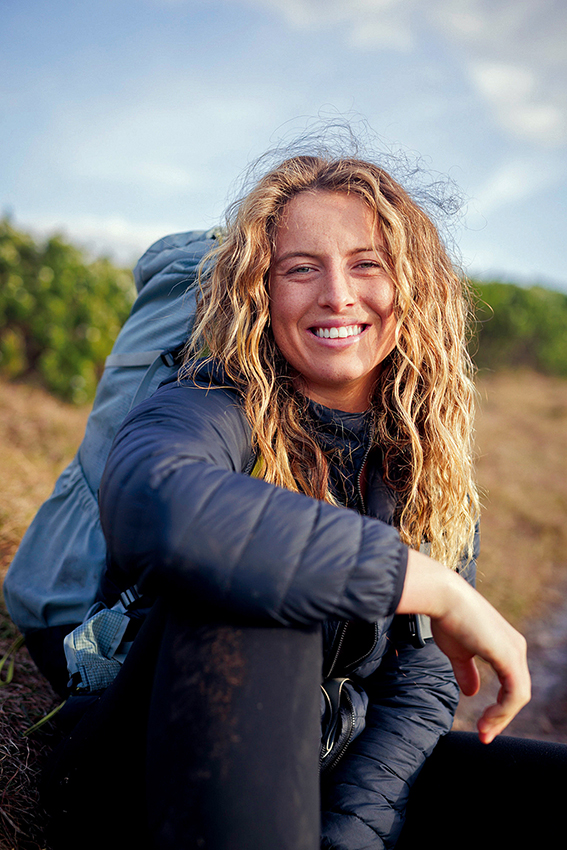
In May 2022, with determination and a little stubbornness driving her on, Bailey set out on her “Wandering Minds Walk” from Wilsons Promontory, the southernmost point of Australia, to Cape York Peninsula, the northernmost tip.
A massive thing indeed
She has walked endless sandy beaches, including the Stockton Sand Dunes which she says were stunning, but a killer for the calves, through small towns and big towns, in the wet, the dry and the humid. Through Victoria and NSW Bailey walked mostly on her own, sleeping in a tent with all she needed in her back pack, except when she needed a food drop or water supplies.
Once she made it to Queensland, her partner Sean, who drives the support vehicle, joined her and when we chatted they were spending the night at a beautiful AirBnB, gifted by a local. “It’s been absolutely wonderful to be in a good bed and dry because it rains so much here! We’re mostly sleeping in the back of a support vehicle or wherever anyone will take us. It’s kind of like being a couple of strays,” Bailey laughed.
She has raised $88,000 for mental health research through the Black Dog Institute, and organisations and individuals have kindly donated clothing, shoes and equipment to support Bailey’s cause.
Read more about Bailey in our Spring Edition of Hunter & Coastal Lifestyle Magazine or subscribe here.
Story by Megan Hazlett, photography courtesy of Bailey Seamer

- Digital edition
- Entertainment
- On the Water
- Classifieds
Bonza leaves hole in flight services
Bowen golf club hosts ladies open, outrigger whitsunday hosts regatta, time to check your land valuations.
NEARLY a year’s journey walking over 5000km along the east coast of Australia, starting from Wilsons Promontory, Victoria, has brought 23-year-old Bailey Seamer to the Whitsundays along her journey to raise funds for the Black Dog Institute on her ‘Wandering Minds Walk’.
On May 18, 2022, Ms Seamer began her journey from Wilsons Prom to Cape York Peninsula in Queensland– entirely by foot.
This large-scale trek was motivated by the growing movement and conversations around mental health awareness, with the intention of raising funds for the Black Dog Institute and its ongoing commitment to research, resources, and services.
“This walking journey stemmed from my mental health journey. I was diagnosed with Major Depressive disorder when I was 14 and then was later diagnosed with Bipolar Disorder when I was 19,” Ms Seamer said.
“Obviously, navigating a chronic mental illness is challenging in itself but at the time it was really, really challenging because I was a young person right on the precipice of getting back out into the world after high school going; what am I going to do?”
Ms Seamer struggled with the mundane aspects of early adulthood due the distributive nature of her mental illness, but one day found that walking offered her clarity and peace of mind, as well as giving her a sense of accomplishment.
“I was getting help in a mental health hospital… I woke up and signed myself out for the day and I just started walking, I didn’t finish walking until 4pm that evening and I ended up at my family home which was 30kms from the hospital.”
Following this newly discovered self-worth she had found with her walking journeys; Ms Seamer made the monumental decision to walk the east coast of Australia.
“I was struggling to hold down work, struggling to do anything, but I was just really good at walking,” she said.
Ms Seamer has been contacted by the masses along her journey, schools reaching out to her as a guest speaker, mental health facilities wishing for her to visit and individuals that have their own experiences with mental illness looking for someone to talk to.
“A really important part for me isn’t just the walking, it was the connecting with the communities along the way and that has without a doubt slowed down this walk monumentally, but it was the whole purpose of it.
“I’ve got a few individuals that I’ll be catching up with over the next few days that have their own children and loved ones that are affected, or are affected themselves.”
Black Dog Institute are a medical research institute in Australia that investigate mental health through research studies, clinical services, and public resources.
“For me personally, I was actually accessing some of the trials and research that they [Black Dog Institute] were providing before I started this walk,” Ms Seamer said.
“One of the main neuropsychiatrists with Black Dog was actually one of my treating psychiatrists when I was in hospital.”
“Theres a lot of management style charities out there, which are really important as well, but the Black Dogs proactive approach with things like genetic research, that try to get to the ‘why’ of it on a scientific level, for me I find a lot of merit in that.
It’s not about just trying to treat it when it’s happened, but trying to prevent it before it does.”
Ms steamer has raised $45,629 out of her $100,000 goal so far. Those who would like to contribute to the cause can donate via www.teamblackdog.org.au under ‘Wandering Minds’.

More articles
New police station for proserpine, yellow crazy ant warning for community, a vision for whitsundays.

Partner of the week

Live Webcam
To be updated with all the latest news, offers and special announcements.
- Our Partners
Your Newspaper
- Where to buy

ISSN 2652-7901
Po box 340 cannonvale qld 4802, phone: 0438 722 050, editorial - deadline monday 12pm.
Editor: Deborah Friend 0488 760 800 [email protected] [email protected]
ADVERTISING - deadline Friday 5pm
Advert specs: Barb [email protected] Graphics/Production: Anita [email protected]
Website by Kapow Interactive

New South Wales News
Wandering 6000 kilometres for mental health awareness.
By MARGARET DEKKER
This is no walk in the park. Nor is it an average day-hike or overnighter on a clearly marked trail. The Wandering Minds Walk is a 6-thousand-kilometre trek (more or less) over a year, solo, carrying 18-kilograms of everything needed for survival with not everything going to plan, on a huge open trail from southernmost Wilsons Promontory in Victoria to northernmost Cape York in Queensland, and all that vast, changing country in between. Doing it is Bailey Seamer, a 23-year-old Newcastle woman whose mission it is to raise awareness, education and important funds for mental health, step by determined step. “I see it as going for a hike every day for a year,” Bailey laughed when The Northern Rivers Times caught up with her, shortly after walking the length of Yuraygir National Park from Minnie Water to Yamba and the big stretch from Woody Head to Evans Head, where Bailey was catching her breath.
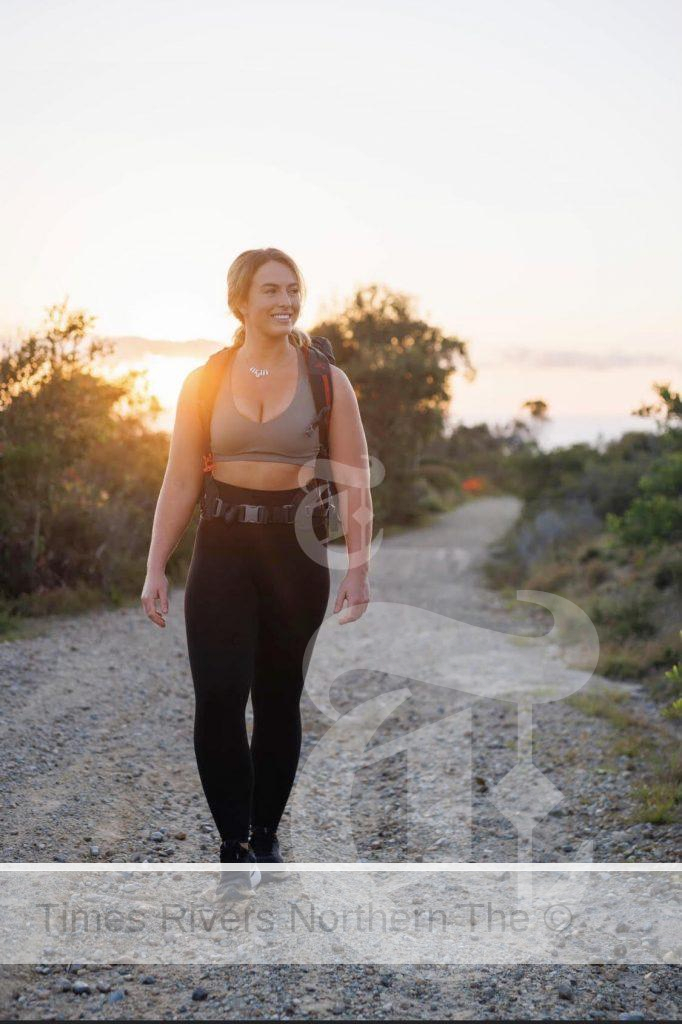
Bailey Seamer starts her “WANDERING MINDS WALK” a one-woman trek along the east coast of Australia.
“My walking’s not really measured in kilometres walked but hours walked each day, and usually I walk between eight and ten hours a day, most days,” Bailey Seamer said. Starting May 18 from remote South Point at ‘The Prom,’ Bailey’s extraordinary feat is made all the more remarkable as hers is a path neither signposted nor contained whole in a guidebook, and far exceeds the 4-thousand-kilometre distance by road. “It’s kind of a course of .. just walk North!” Bailey laughed. .. Over beaches and bushland, river crossings and scrub .. and the dreaded impassable headland requiring the dreaded “backtrack.” “I have to all the time!” Bailey said. “It’s not all fun, some days I absolutely hate it because of physical injury or psychological stress or environmental factors I face. “But I do get these windows of absolute positivity and beauty which make it all worth it. Let’s just say it’s 90-percent grind and 10-percent pleasure,” Bailey Seamer said. This third-year nursing student has already raised $30-thousand dollars for the Black Dog Institute to help fund research, resources, and services for better mental health. 1 in 5 Australians will experience symptoms of mental illness in any one year. “ .. that’s around 5 million people. And roughly 60% of these people won’t seek help,” the Blackdog Institute states. Now 2100 kilometres into her northern ascent, it’s also a personal journey for Bailey Seamer who experiences bipolar disorder. “I was in psych hospitals as a young adult, but I got to a crossroads in my life where I said, ‘this can’t be it’ – I was told I’d struggle to ever work, hold down a relationship, finish a Uni. degree and it really did feel like an absolute sentence,” Bailey Seamer said. “But then I thought ‘this suffering can’t be everything I ever have.’ There had to be more to life, and I realised I could help others. “You could say, I was more scared of living the life I was then living .. than to take the jump to do something that may actually kill me!” Bailey said. And mid-way along her quest, Bailey Seamer is living proof anything’s possible. “You could say, I’m taking my mental illness on the road. It would seem impossible, managing a mental illness while simultaneously walking, that that’s where the problems would lie, but starting was the hardest thing to do. And it’s shown me that I can show others with mental illness that you can have a life and passions, you can do it,” she said. It’s a journey complete with unique coping strategies, to keep this one-woman show on the road, including her ‘Tantrum Timer’ when feelings ‘bubble’ and stress builds. “I set the Tantrum Timer to six minutes, throw the pack down whether it’s bush or beach, I scream, cry, let it all out like a toddler at the shopping centre and when the timer goes off, I pick myself up, brush myself off and get going,” she smiled. Because when the going gets tough, the tough get going, inspiring others. “People have contacted me saying ‘You’re the reason I got out of bed in the morning, because of what you’re doing, given what you’ve overcome to do this,’” Bailey Seamer said. As she draws her own inspiration from her late Grandma’s mottos: “If you’re brave enough to try, you’re brave enough to succeed ..” And: “Courage is not the absence of fear but deciding something else is more important than fear itself.” As Bailey treks ever north, parallels are drawn between her and American woman Cheryl Strayed who, at a similar 22 years of age, hiked 1770 kilometres up the Pacific Crest Trail on America’s West Coast, inspiring a best-selling book and movie. “People do say, ‘you’re that ‘Wild’ movie person and I go ‘yeah, kind of, but I don’t have the endless views and I have a lot of mud!’” Bailey Seamer laughed. “But it’s a similar thing, giving up everything to try and create a better reality.” From here, the reality is at least 700 more kilometres of coastline to Seventeen Seventy near Gladstone in Queensland, where Bailey finally turns in. “From there up, there are crocodiles! So, I’ll have to turn inland to get to Cape Tribulation,” she conceded. Her father, greatest supporter, and former Newcastle Knights player Scott Seamer will join his daughter for the last leg of this epic adventure, all the way to the Cape. “I know once it’s over, I will reflect on this trip with a lot of fondness, like any adventure, once it’s done, I will be like ‘I can’t believe I did that.” “This will be with me for the rest of my life, to take with me wherever I go, that I walked the East Coast of Australia. It’s good to have this in my back pocket, that my own capability is immeasurable,” Bailey Seamer said. Just don’t tell this walking warrior to ‘live in the moment ..’ “These people haven’t tried a river crossing!” she laughed. .. before I ask the obvious question to the one woman who’s walking the entire East Coast of Australia solo and carrying a heavy pack: “How are your FEET?” “Haha! My body is refusing to grow skin now on certain parts because it just comes off again anyway .. But my Soloman boots, they’ve been phenomenal, they’re my Four-Wheel-Drives,” she said, while still on her original pair! And her Top-3 highlights this far? • Jervis Bay “beautiful weather, no people, sunrises and just dolphins everywhere ..” • Yuraygir National Park “was gorgeous coming up through Yamba and Iluka ..” • Taronga Zoo’s ‘Roar and Snore’ experience As Bailey Seamer laces up for yet another leg of this one-woman triumph. “From here at Evans Head, I’ll zip up to Ballina by the beach .. it’s 40-something K’s (kilometres) then to Lennox to Byron Bay. Yes, a big couple of days!” she said. It’s almost a marathon. In more ways than one. “Yeah I do think of that sometimes .. But if I stop, I don’t get anywhere,” Bailey Seamer opined. Infinite wisdom already, from this 23-year-old’s infinite journey of a lifetime. “I didn’t expect this trip would harden me the way it already has, make me more cynical in fact, that it’s not this whimsical walk in a flowy dress but that out there, there are real life or death challenges. “My perception on reality is now very different, what’s important now are safety, shelter, food, and water. I have a whole new understanding of what is a problem. “And if change is going to happen, you can’t dictate how it will happen, and it’s likely to have both positive and negative aspects but that’s just what comes with it,” Bailey Seamer shared from her wandering and wondering mind. “And I have a whole new appreciation for something as simple as a bench seat! “You could say I had my ‘Forrest Gump’ moment,” she laughed. Indeed, ‘Walk Bailey Walk’ – for another 2000 kilometres, and more.

Heading North! 6000 kms to Cape York
CLICK HERE TO DOWNLOAD BAILEYS STORY

$100,000 AVAILABLE TO SUPPORT 2023 NSW WOMEN’S WEEK EVENTS
ONE MONTH IN, STORM SEASON REMAINS RELENTLESS

You may like

New Grafton Anglican Dean named

LISTEN FOR LYREBIRDS IN TWEED
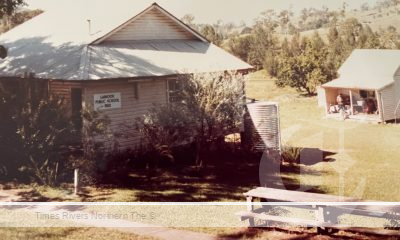
Larnook: 100 years of school memories
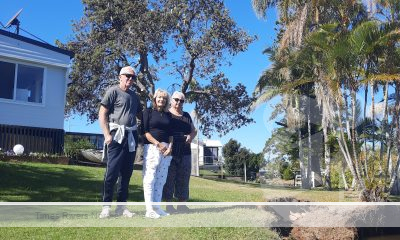
CHINDERAH RESIDENTS FEAR THEIR HOME WILL BE LOST TO THE TWEED RIVER
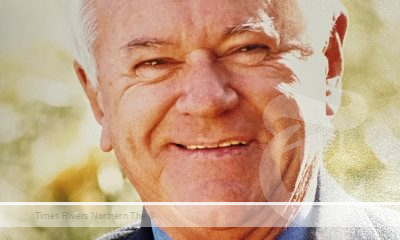
Former Tweed Shire Deputy Mayor remembered for service to community
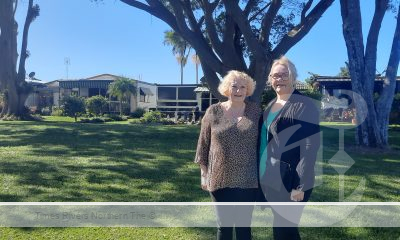
HEADLINE: FLOOD AFFECTED RESIDENTS SAY THEY’RE NOT WAITING TO BE RESCUED AGAIN
Child Protection Workers Strike in New England Over Safety Concerns
May 8 th , child protection caseworkers staged a walkout and gather for a protest outside the Community Services Centre in Tamworth , highlighting a severe staffing crisis and its impact on child safety in New England.
The workers, supported by the Public Service Association of NSW (PSA), are voicing urgent concerns over the handling of child protection cases in the region. According to internal data, last year saw 18,582 children reported as at risk of serious harm (ROSH) across New England, Mid North Coast, and Northern NSW, yet only 15% received visits from caseworkers—marking the lowest response rate in the state.
Chronic understaffing is a critical issue, with more than 20% of child protection positions currently unfilled in these districts, occasionally reaching 25%. This dire shortage contributes to high turnover rates, with 50% of caseworkers leaving within their first two years of service.
Stewart Little, General Secretary of PSA, expressed deep concerns about the ongoing crisis: “Our most vulnerable children are being put at greater risk due to the lack of sufficient staff and the overwhelming exhaustion faced by the current workforce,” he said. Little highlighted that the strike is part of a broader strategy to press the government for significant reforms, including the recruitment of 500 new caseworkers, substantial pay raises for current staff, and a move to de-privatise foster care services.
The PSA warns that today’s protest is just the beginning, with plans for an escalating series of rallies across the state if the demands are not met. They assure the public that urgent child protection responses will not be affected during the protest, with skeleton staffing maintained throughout.
Child protection workers urge Premier Chris Minns and Minister Kate Washington to take immediate action to resolve the staffing crisis and improve the system, emphasising that while the current NSW government did not create the problem, it is their responsibility to solve it.
For more New South Whales news, click here .
Marine Rescue NSW Wraps Up Second Busiest Season with Over 3,200 Missions
Marine Rescue NSW has recently concluded its second busiest boating season to date, undertaking 3,242 search and rescue missions, including 921 emergencies from October 1, 2023, to ANZAC Day 2024. This year’s operations nearly matched the record-setting 3,251 missions of the 2022/23 season, according to Commissioner Alex Barrell.
The organisations 3,400 volunteers played a crucial role in ensuring the safety of 7,535 boaters across the state’s waters, returning them safely to shore. Commissioner Barrell highlighted a significant challenge this season: “Over 40% of our emergency responses were due to mechanical failures, particularly engine issues. We strongly encourage boaters to thoroughly check their equipment before setting out to prevent such avoidable situations.”
Marine Rescue Lake Macquarie reported the highest activity with 441 missions. Remarkably, the regions of Mid North Coast, Illawarra, and Monaro also experienced their busiest seasons on record. The Monaro region’s eight units saw a 16% increase in operations, Mid North Coast responses rose by 11%, and Illawarra units handled a 7% uptick in demand.
Throughout the season, the service managed 144,806 radio communications, with many being coordinated through the Marine Rescue Sydney State Communications Centre at Belrose. Among these, there were 69 MAYDAY calls signalling imminent danger and 42 PAN PAN calls from boaters facing urgent but non-life-threatening issues.
Commissioner Barrell expressed his gratitude towards the volunteers: “I want to commend all our volunteers for their relentless dedication to maintaining safety on our waterways.” He also reminded boaters to stay vigilant year-round, emphasizing the importance of proper preparation and safety measures, especially during the colder months. “Ensure you log on with your local Marine Rescue NSW base and always wear appropriate safety gear, including lifejackets and warm clothing during winter outings,” he advised.
This season also saw a steady number of boaters using the free Marine Rescue app or VHF channel 16 to log their voyages, aiding in efficient monitoring and quicker response times in emergencies. With 44% of the season’s missions involving boating or fishing activities, and 125 incidents of capsized vessels, the importance of staying with the vessel and wearing lifejackets was particularly underscored by the Commissioner.
Cameras to enforce seatbelt law across NSW from July 1

WEARING a seatbelt will be enforced by existing mobile phone detection cameras from July 1 as the NSW Labor Government bolsters efforts to counter the rising number of road fatalities across the state.
The simple act of correctly wearing a seatbelt while in a moving vehicle has been a legal requirement in NSW for more than 50 years, but data shows 150 people died while not wearing one in the five years between 2019 and 2023.
On average, 15 per cent of deaths on NSW roads every year still involve seatbelt non-usage, with 36 people tragically lost last year.
The enhancement of the state’s world-first mobile phone detection camera network will allow for a July 1 start date to the cameras also enforcing the seatbelt laws for the first time, the NSW Government confirms today.
Unlike when other new enforcement technologies have come into effect, there will be no grace period of warning letters after the NSW Parliament voted against starting seatbelt detection cameras in warning mode when enabling legislation was passed last year.
Photos released from testing of the cameras show a small but persistent percentage of drivers and some passengers continue to flout the law and wear their seatbelt incorrectly, including with the sash below the arm.
Every dollar raised by seatbelt cameras will go back into road safety.
Quotes attributable to State Member for Lismore Janelle Saffin:
“The key here is personal, family and community safety. This is the best position from which to start.
“Our government wants to keep us safe. Our government has a duty to keep us safe. And at times that calls for some tough love.
“If drivers are failing in your obligation to keep yourself, your passengers and your fellow citizens, we shall slug you hard.
“I cannot believe that in 2024 some people are driving without putting their seatbelts on. They are putting themselves and everyone they come into contact with at risk.
“The message is clear; belt up, buckle up or pay the price.”
As of midnight Thursday 2 May 2024, 124 lives have been lost on NSW roads, which is 16 more than the same time last in 2023.
The NSW Labor Government has introduced a number of measures to counter the rising number of road fatalities, including:
- The demerit point trial to encourage motorists who maintain a spotless record over 12 months to have a demerit point removed from their record
- Hosting the state’s first Road Safety Forum of international and local experts
- Last month we signed the National Road Safety Data Sharing Agreement to help support analysis of driver behaviour , and help the various state and federal governments work together to understand where the funding needs to go
- Removing a loophole to force all motorists driving on a foreign licence to convert to a NSW licence within six months
- Doubling roadside enforcement sites used for mobile speed cameras, with the addition of 2700 new locations where a camera can be deployed. Enforcement hours will remain the same.
Today marks the start of National Road Safety Week, an annual initiative of the Safer Australian Roads and Highways (SARAH) Group, which aims to highlight the impact of road trauma and ways to reduce it.
The theme for 2024 is All road safety is local – Drive So Others Survive. For more information on National Road Safety Week visit h ere.
NRTimes Online

Advertisement

Latest News

Why Travel Should Be an Essential Human Activity

Top Romantic Getaways to Explore with Your Partner

Saffin secures one-off grant for Thistles’ shower cubicles project

Rainbows Dragons have success at Kalang Regatta

Alstonville opens new sporting facility

Tough weekend of footy looms

A NEW TWEED HEADS

Toyota Supra: Get Ready For A Fully Electric Version In 2025

Northern Rivers Local Health District COVID-19 update

Northern Rivers COVID-19 update

Fears proposed residential tower will ‘obliterate’ Tweed neighbourhood’s amenity and charm

COVID-19 Vaccination Clinic now open at Lismore Square
National News Australia

NSW Government to Modernise Planning with $5.6 Million AI Investment
NSW Government to Modernise Planning with $5.6 Million AI Investment The NSW Government has announced a $5.6 million initiative...
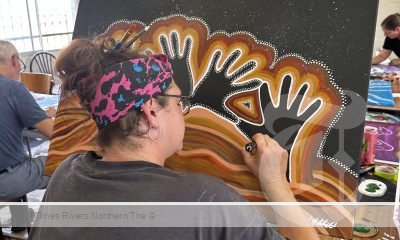
Nearly $1.4M in Grants Awarded to Strengthen Rural Communities Across Australia
Nearly $1.4M in Grants Awarded to Strengthen Rural Communities Across Australia In a significant boost for rural development, the...

National Parenting Survey Unveils Challenges of Modern Parenting Amid Economic and Social Pressures
National Parenting Survey Unveils Challenges of Modern Parenting Amid Economic and Social Pressures In a landmark survey, the Triple...

Lismore Family Medical Practice employee close contact

Vale: Former NSW prison boss Ron Woodham

How to Tame Your Wandering Mind
Learn to take steps to deal with distraction..
Posted April 24, 2022 | Reviewed by Jessica Schrader
- Understanding Attention
- Find counselling to help with ADHD
- We can tame our mind-wandering.
- Three tips can help you use mind-wandering to your advantage.
- These include making time to mind-wander and controlling your response to it.
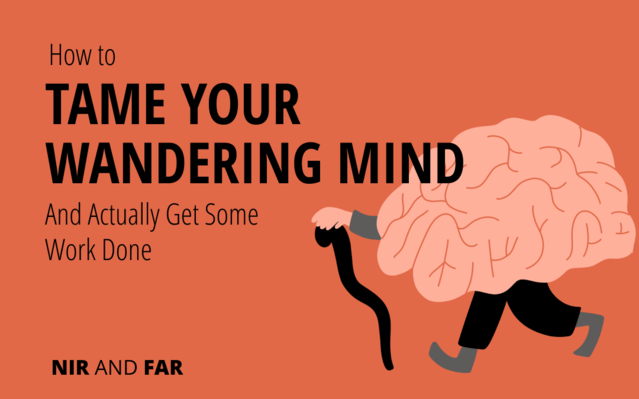
Researchers believe that when a task isn’t sufficiently rewarding, our brains search for something more interesting to think about.
You have a big deadline looming, and it’s time to hunker down. But every time you start working, you find that, for some reason, your mind drifts off before you can get any real work done. What gives? What is this cruel trick our brains play on us, and what do we do about it?
Thankfully, by understanding why our mind wanders and taking steps to deal with distraction, we can stay on track. But first, let’s understand the root of the problem.
Why do our minds wander?
Unintentional mind-wandering occurs when our thoughts are not tied to the task at hand. Researchers believe our minds wander when the thing we’re supposed to be doing is not sufficiently rewarding, so our brains look for something more interesting to think about.
We’ve all experienced it from time to time, but it’s important to note that some people struggle with chronic mind-wandering : Though studies estimate ADHD afflicts less than 3% of the global adult population, it can be a serious problem and may require medical intervention.
For the vast majority of people, mind-wandering is something we can tame on our own—that is, if we know what to do about it. In fact, according to Professor Ethan Kross, director of the Emotion & Self Control Laboratory at the University of Michigan and author of Chatter: The Voice in Our Head, Why It Matters, and How to Harness It , mind-wandering is perfectly normal.
“We spend between a third to a half of our waking hours not focused on the present,” he told me in an email. “Some neuroscience research refers to our tendency to mind-wander as our ‘default state.’”
So why do we do it?
“Mind-wandering serves several valuable functions. It helps us simulate and plan for the future and learn from our past, and it facilitates creative problem-solving,” Kross explained. “Mind-wandering often gets a bad rep, but it’s a psychological process that evolved to provide us with a competitive advantage. Imagine not being able to plan for the future or learn from your past mistakes.”
Is mind-wandering bad for you?
“Like any psychological tool, however, mind-wandering can be harmful if used in the wrong context (i.e., when you’re trying to focus on a task) or inappropriately (i.e., when you worry or ruminate too much),” according to Kross. In other words, mind-wandering is a problem when it becomes a distraction. A distraction is any action that pulls you away from what you planned to do.
If, for instance, you intended to work on a big project, such as writing a blog post or finishing a proposal, but instead find yourself doing something else, you’re distracted.
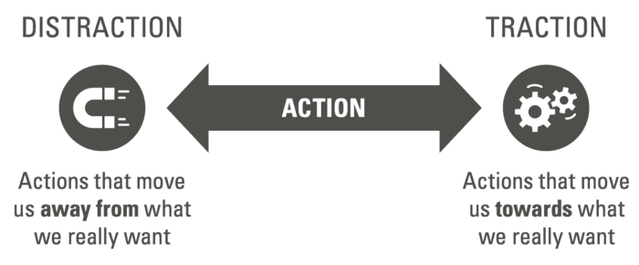
The good news is that we can use mind-wandering to our advantage if we follow a few simple steps:
1. Make time to mind-wander
Mind-wandering isn’t always a distraction. If we plan for it, we can turn mind-wandering into traction. Unlike a distraction , which by definition is a bad thing, a diversion is simply a refocusing of attention and isn’t always harmful.
There’s nothing wrong with deciding to refocus your attention for a while. In fact, we often enjoy all kinds of diversions and pay for the privilege.
A movie or a good book, for instance, diverts our attention away from real life for a while so we can get into the story and escape reality for a bit.
Similarly, if you make time to allow your mind to drift and explore whatever it likes, that’s a healthy diversion, not a distraction.
The first step to mastering mind-wandering is to plan time for it. Use a schedule maker and block off time in your day to let your thoughts flow freely. You’ll likely find that a few minutes spent in contemplation can help you work through unresolved issues and lead to breakthroughs. Scheduling mind-wandering also lets you relax because you know you have time to think about whatever is on your mind instead of believing you need to act on every passing thought.
It’s helpful to know that time to think is on your calendar so you don’t have to interrupt your mind-wandering process or risk getting distracted later.
2. Catch the action
One of the difficulties surrounding mind-wandering is that by the time you notice you’re doing it, you’ve already done it. It’s an unconscious process so you can’t prevent it from happening.

The good news is that while you can’t stop your mind from wandering, you can control what you do when it happens.
Many people never learn that they are not their thoughts. They believe the voice in their head is somehow a special part of them, like their soul speaking out their inner desires and true self. When random thoughts cross their mind, they think those thoughts must be speaking some important truth.
Not true. That voice in your head is not your soul talking, nor do you have to believe everything you think.
When we assign undue importance to the chatter in our heads, we risk listening to half-baked ideas, feeling shame for intrusive thoughts, or acting impulsively against our best interests.
A much healthier way to view mind-wandering is as brain static. Just as the random radio frequencies you tune through don’t reveal the inner desires of your car’s soul, the thoughts you have while mind-wandering don’t mean much—unless, that is, you act upon them.
Though it can throw us off track, mind-wandering generally only lasts a few seconds, maybe minutes. However, when we let mind-wandering turn into other distractions, such as social-media scrolling, television-channel surfing, or news-headline checking, that’s when we risk wasting hours rather than mere minutes.
If you do find yourself mentally drifting off in the middle of a task, the important thing is to not allow that to become an unintended action, and therefore a distraction.
An intrusive thought is not your fault. It can’t be controlled. What matters is how you respond to it—hence the word respon-sibility.
Do you let the thought go and stay on task? Or do you allow yourself to escape what you’re doing by letting it lead you toward an action you’ll later regret?
3. Note and refocus
Can we keep the helpful aspects of mind-wandering while doing away with the bad? For the most part, yes, we can.
According to Kross, “Mind-wandering can easily shift into dysfunctional worry and rumination. When that happens, the options are to refocus on the present or to implement tools that help people mind-wander more effectively.”
One of the best ways to harness the power of mind-wandering while doing an important task is to quickly note the thought you don’t want to lose on a piece of paper. It’s a simple tactic anyone can use but few bother to do. Note that I didn’t recommend an app or sending yourself an email. Tech tools are full of external triggers that can tempt us to just check “one quick thing,” and before we know it, we’re distracted.
Rather, a pen and Post-it note or a notepad are the ideal tools to get ideas out of your head without the temptations that may lead you away from what you planned to do.
Then, you can collect your thoughts and check back on them later during the time you’ve planned in your day to chew on your ideas. If you give your thoughts a little time, you’ll often find that those super important ideas aren’t so important after all.
If you had acted on them at the moment, they would have wasted your time. But by writing them down and revisiting them when you’ve planned to do so, they have time to marinate and may become less relevant.
However, once in a while, an idea you collected will turn out to be a gem. With the time you planned to chew on the thought, you may discover that mind-wandering spurred you to a great insight you can explore later.
By following the three steps above, you’ll be able to master mind-wandering rather than letting it become your master.

Nir Eyal, who has lectured at Stanford's Graduate School of Business and the Hasso Plattner Institute of Design, is the author of Indistractable: How to Control Your Attention and Choose Your Life.
- Find a Therapist
- Find a Treatment Center
- Find a Psychiatrist
- Find a Support Group
- Find Online Therapy
- International
- New Zealand
- South Africa
- Switzerland
- Asperger's
- Bipolar Disorder
- Chronic Pain
- Eating Disorders
- Passive Aggression
- Personality
- Goal Setting
- Positive Psychology
- Stopping Smoking
- Low Sexual Desire
- Relationships
- Child Development
- Therapy Center NEW
- Diagnosis Dictionary
- Types of Therapy

Understanding what emotional intelligence looks like and the steps needed to improve it could light a path to a more emotionally adept world.
- Emotional Intelligence
- Gaslighting
- Affective Forecasting
- Neuroscience
'IF': How John Krasinski's daughters helped him create his 'most personal' movie yet

When John Krasinski was 8 years old, he wanted braces more than anything.
That desire was short-lived. ("Turns out, braces aren't as comfortable or as fun as you thought they'd be," Krasinski quips.) But it did spark the name of his imaginary friend, Sam Brace, who would trek with him to the video store near his boyhood home in the Boston suburbs. There, Krasinski picked out the latest action films and comedies, which he proceeded to act out with Sam.
“We would live through these movies,” recalls " The Office " star, who wrote and directed the new family adventure “IF” (in theaters Friday), an acronym for “imaginary friend.” During a recent interview, “someone said, ‘So, Sam directed this movie.’ And I totally blacked out and went, ‘Oh, my God. Sam totally did.’”
John Krasinski and wife Emily Blunt wanted to make 'IF' for their daughters
Not everyone has such fond memories of their imaginary friends. Steve Carell , who plays a giant purple IF named Blue, only vaguely remembers having one.
Need a break? Play the USA TODAY Daily Crossword Puzzle.
"I’m hoping to reclaim that friendship," Carell deadpans. "Perhaps this movie will send me in that direction.”
Cailey Fleming, who portrays the film’s young protagonist Bea, similarly never had pretend pals growing up. But she says she's "never been so moved by a script before."
“I couldn't get through the whole thing without bawling,” says the 17-year-old actress (" The Walking Dead "). “And that's something John and I have in common: We both cry very easily.”
“IF” begins with a heart-wrenching montage in which a younger Bea (Audrey Hoffman) loses her ailing mom (Catharine Daddario). Years later and now a preteen, Bea is sent to stay with her grandmother (Fiona Shaw) while her dad (Krasinski) undergoes surgery. Lonely and wandering around her grandma’s apartment building, she meets a mysterious man (Ryan Reynolds) and a throng of magical creatures, which turn out to be retired IFs whose kids forgot about them when they grew up.
Krasinski, 44, was inspired to make the movie during the pandemic, while sheltering with his wife, Oscar nominee Emily Blunt , and their two daughters, Hazel (10) and Violet (7).
“All the imaginary games that my girls were playing became fewer and fewer,” Krasinski says. “I genuinely saw their lights starting to go out, and they started asking big questions like, ‘Are we going to be OK?’ I said to Emily, ‘This is the definition of growing up,' when you start to make that choice of, ‘Do I let go of all this childhood stuff to be in your real world?’ ”
In writing this story, he wanted to show that "you don't have to choose. That magical world you created is a time capsule you can always go back to."
'IF' is an unexpected 'companion' piece to 'A Quiet Place'
For a visual-effects-heavy kids' movie, "IF" feels remarkably low stakes, as Bea helps find new homes for the imaginary friends and impels adults to reconnect with their inner child. Thankfully, Krasinski says, there was no pressure for a "big action sequence." Rather, he took cues from the films that moved him most as a child, including “E.T.,” “The Goonies” and “Dead Poets Society."
Growing up, "those filmmakers actually gave me credit that I could hold bigger themes," Krasinski says. "That’s really what I took with me into this movie: Don’t shy away from emotionality.”
Although they couldn’t be more different, “IF” has unlikely parallels to his 2018 sci-fi thriller “A Quiet Place,” about a family fighting for survival after an alien invasion. For "Quiet Place," Krasinski drew from his own anxieties as a dad wanting to protect his kids. But "IF" turns the tables to focus on children's worries and fears.
“I love the idea of them being companion pieces,” Krasinski says. "They're both about love and family." Blunt had just given birth to Violet before the first "Quiet Place" film, so “we were in that new parent zone and that felt very authentic. This feels even more authentic," in that "I got this experience of working with my kids and talking to my kids and having them be a part of this from the beginning. It was the most personal thing I have ever done in my career."
Steve Carell says it was 'a no-brainer' reuniting with his 'The Office' co-star
Throughout the making of “IF,” Krasinski’s daughters weighed in on every aspect of the film: He showed them early sketches he drew of the various IFs, and they offered feedback on which scenes to use in the trailer. Their imaginary friends even became characters in the movie, voiced by Maya Rudolph and Krasinski, respectively.
“The pink alligator is Violet’s imaginary friend, and Hazel’s imaginary friend is the marshmallow that lights on fire,” Krasinski explains. “Hazel is a very empathetic person. We were making s'mores one day and her marshmallow caught on fire, and she was emotionally destroyed.”
The movie features an A-list roster of celebrities playing the IFs, including Bradley Cooper , Phoebe Waller-Bridge , George Clooney , Matt Damon and Blake Lively . To portray Blue, Krasinski knew he needed someone who was "sweet" but also "vulnerable." He immediately turned to his beloved "Office" co-star Carell, 61, who has also been his longtime go-to for parenting advice, as a dad to Annie (22) and John (19) with wife Nancy Walls.
"We love each other and we've always worked well together," Carell says. "John is a fantastic director, and there's a reason everybody jumped at the chance to be in this movie. It was a no-brainer for me."
The actors light up when talking about kids' vivid imaginations. Carell is mildly traumatized by this reporter's childhood belief that lobsters lived in the toilet, just waiting to pull us in.
"Now I will always feel like there's a lobster in my toilet," Carell says with a laugh. Growing up, "my son thought that when I was young, the world was in black and white. He didn't think color appeared in the world until he was on the scene. So that's how old he thinks I am!"

IMAGES
COMMENTS
Bailey Seamer's "WANDERING MINDS WALK" is a testament to her unwavering commitment to mental health advocacy and education. Over the course of a year from May 2022 to July 2023, Bailey trekked over 5000km along the east coast of Australia, from Wilsons Promontory to Cape York Peninsula, all while positively impacting others and raising over $90,000 for the Black Dog Institute.
The Wandering Minds Mission. I was told about the Wandering Minds Walk by my Mum who'd heard about it on the local radio. She excitedly told me that a young woman called Bailey was walking the entire East Coast of Australia to raise money for the Black Dog Institute, and she was about to wander through our little corner of the NSW South Coast!
The walk has taken Ms Seamer to some of the most stunning parts of the country. ( Supplied: Sean Fox, Wandering Minds Walk ) She called the journey the Wandering Minds Walk to reflect the extreme ...
Wandering Minds Walk. A year's journey Trekking over 5000km along the east coast of Australia. Hi, My name is Bailey, and I am Trekking over 5000km along the east coast of Australia, starting from the most southern point of Australia at Wilsons Promontory to the most northern tip of the Cape York Peninsula in Queensland. Positively impacting ...
Wandering Minds. Wandering Minds. 3,608 likes · 3 talking about this. A year's journey Trekking over 5000km along the east coast of Australia advocating for mental hea.
Bailey Seamer's hike of over 5000+ kilometres along the east coast of Australia to raise funds for the Black Dog Institute impacted the lives of thousands.As...
Wandering Minds Walk. 24-year-old Caves Beach local Bailey Seamer has been walking more than 5,000 kms to ignite conversations about mental health and to prove to herself that a bipolar diagnosis does not define her. At the age of 13, a time when most of us are forming hopes and dreams for the future, Bailey's came tumbling down. ...
NEARLY a year's journey walking over 5000km along the east coast of Australia, starting from Wilsons Promontory, Victoria, has brought 23-year-old Bailey Seamer to the Whitsundays along her journey to raise funds for the Black Dog Institute on her 'Wandering Minds Walk'. On May 18, 2022, Ms Seamer began her journey from Wilsons Prom to ...
It's official, we have hit red dirt and are on the final 4 week countdown to the top of Cape York Peninsula! With 800kms ahead it's definitely getting to the pointy end! (Pun intended) So strap in...
There's an issue and the page could not be loaded. Reload page. 5,761 Followers, 304 Following, 288 Posts - See Instagram photos and videos from Bailey Seamer - mental health advocate (@wandering_minds_walk)
The Wandering Minds Walk is a 6-thousand-kilometre trek (more or less) over a year, solo, carrying 18-kilograms of everything needed for survival with not everything going to plan, on a huge open trail from southernmost Wilsons Promontory in Victoria to northernmost Cape York in Queensland, and all that vast, changing country in between. ...
Picture a leisurely walk through the city's charming neighborhoods, where we engage in intellectually stimulating conversations, reminiscent of those held in 17th-century salons. As we stroll along the scenic routes, we pause at specially chosen spots to immerse ourselves in a guided meditation session.
Mind wandering is a universal human experience rooted in evolution and brain science. Creative thinking and problem-solving happen when people's minds wander. Mind wandering also allows ...
What an amazing opportunity to be a part of Stand Tall Tamworth 2023! For those unfamiliar - The Stand Tall event was founded in 2012 by Jeanine Treherne, Angela Farr-jones and Roslyn Hills and has...
Mindfulness has experienced a wandering backlash. Every few years, a study or a Goop "wellness protocol" (pick your poison) seeks to recalibrate our relationship to the present moment. Fifty per cent of our time is spent with our head in the clouds, they say. Too much of our time is spent watching our favorite bands lovingly compose songs from Game of Thrones accompanied by an orchestra ...
The constant sloping sand into the water makes it really difficult to walk without slipping and sliding. ... Wandering Minds - I acknowledge the incredible coastal lands and waterways of our First Nations people, spanning from Wilson's Promontory Victoria, to Cape York Queensland upon which I am privileged to be walking to advocate for mental ...
Physical activity, like a short walk or shaking out your arms and legs in between meetings, can interrupt the cycle of mind wandering and re-energize your focus. 💙 If the mind is wandering, try bringing it back to the present moment through movement. Check out Mindful Movement with Mel Mah. 7. Use grounding exercises.
Find counselling to help with ADHD. The first step to mastering mind-wandering is to plan time for it. Use a schedule maker and block off time in your day to let your thoughts flow freely. You ...
See Hollywood's biggest stars walk the carpet Review: Proudly bizarre 'I Saw the TV Glow" will boggle your mind - and that's the point 'If' movie review: Ryan Reynolds' imaginary friend fantasy ...